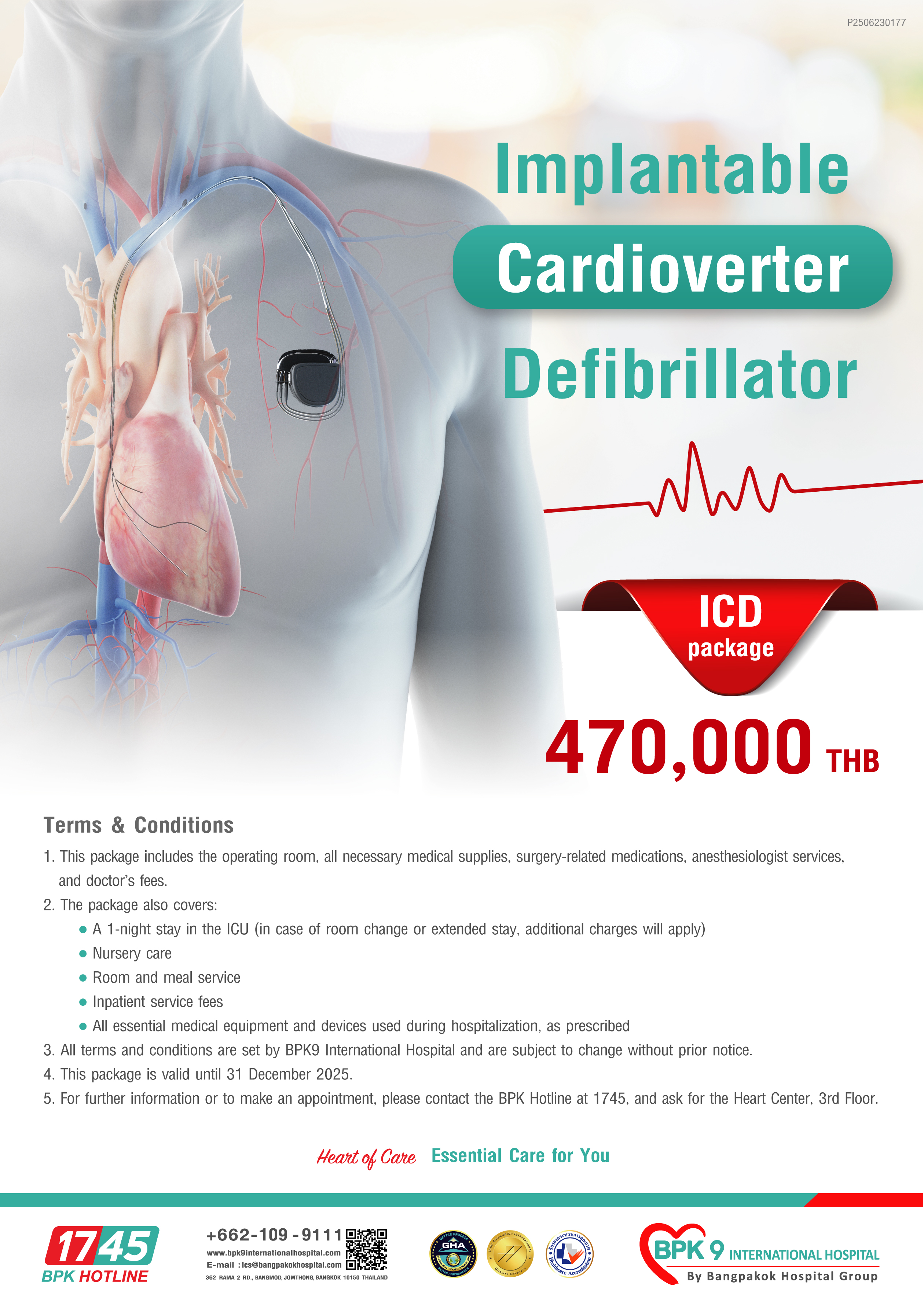Implantable Cardioverter Defibrillator (ICD)

Implantable Cardioverter Defibrillator (ICD): A Deep Dive into a Life-Saving Device
What Is an ICD?
An Implantable Cardioverter Defibrillator (ICD) is a small electronic device that is surgically placed under the skin, usually near the collarbone. It connects to the heart via thin insulated wires called leads. The ICD continuously monitors your heart’s rhythm and, if it detects a dangerous irregularity, it responds instantly either by delivering small electrical pulses or a strong shock to restore the heart’s normal beat.
Unlike a pacemaker, which primarily helps slow or irregular heartbeats, an ICD is designed to treat dangerously fast heart rhythms (arrhythmias) that can lead to sudden cardiac arrest (SCA).
How Does It Work?
The ICD has three main functions:
- Monitoring: Constantly checks the heart’s electrical signals for abnormal rhythms.
- Pacing: If the heartbeat is too fast or chaotic, the ICD may try anti-tachycardia pacing (ATP) delivering a series of fast pulses to stop the arrhythmia.
- Defibrillation Shock: If pacing doesn’t work or the rhythm is extremely dangerous, the ICD gives a high-energy shock to reset the heart.
These actions happen in seconds, often before the patient even fully realizes what’s happening.
What Conditions Does an ICD Treat?
ICDs are used to treat or prevent life-threatening arrhythmias such as:
- Ventricular tachycardia (VT): A dangerously fast heart rate starting in the ventricles.
- Ventricular fibrillation (VF): Disorganized electrical activity causing the heart to quiver instead of pumping.
- Sudden Cardiac Arrest (SCA): When the heart suddenly stops beating, ICDs are the most effective way to prevent death in high-risk patients.
Additionally, ICDs may be used in:
- Heart failure with reduced ejection fraction (HFrEF)
- Inherited heart conditions like:
- Long QT Syndrome
- Brugada Syndrome
- Hypertrophic Cardiomyopathy
- Arrhythmogenic Right Ventricular Cardiomyopathy (ARVC)
Who Needs an ICD?
Doctors may recommend an ICD if you:
- Have survived a sudden cardiac arrest or life-threatening arrhythmia.
- Have had a heart attack and your ejection fraction (EF) (a measure of heart function) is 35% or lower.
- Live with heart failure or cardiomyopathy that increases your risk of deadly arrhythmias.
- Have a genetic heart rhythm disorder or a strong family history of sudden cardiac death.
- Are at risk of drug-induced arrhythmias or complications from prior heart surgery.
ICDs can be used for primary prevention (before a cardiac event occurs) or secondary prevention (after an event like cardiac arrest).
What Are the Benefits of an ICD?
- Prevents sudden cardiac death, especially in high-risk patients.
- Responds automatically and rapidly to abnormal rhythms.
- Improves long-term survival rates in those with heart disease.
- Reduces the need for emergency interventions like CPR or external defibrillators.
- Offers peace of mind to patients and families.
- Modern devices may include remote monitoring, allowing doctors to track heart health from a distance.
Some ICDs also function as CRT-D devices (Cardiac Resynchronization Therapy Defibrillators), helping to improve heart efficiency in heart failure patients.
What Is It Like Living with an ICD? The Implantation Procedure
- Done under local anesthesia and sedation.
- Usually takes 1 to 2 hours.
- Most patients go home within a day or two.
Recovery & Lifestyle
- Normal daily activities often resume within a few weeks.
- You’ll need to avoid:
- Strong magnetic fields (e.g., MRI machines without ICD compatibility).
- Contact sports (to avoid damage to the device).
- Regular follow-up visits are important to check the battery and device settings.
Possible Side Effects or Risks
- Infection at the implant site
- Discomfort or swelling
- Rare device malfunctions or inappropriate shocks
Most people adapt well to life with an ICD and find that the benefits far outweigh any inconveniences.
ICD vs Pacemaker – What’s the Difference?
|
Feature |
Pacemaker |
ICD |
|
Purpose |
Corrects slow heartbeats |
Stops dangerously fast heart rhythms |
|
Electrical Output |
Low-energy pulses |
High-energy shocks + low-energy pacing |
|
Common Use Cases |
Bradycardia, heart block |
VT, VF, sudden cardiac arrest |
Heart of Care, Essential Care for You

